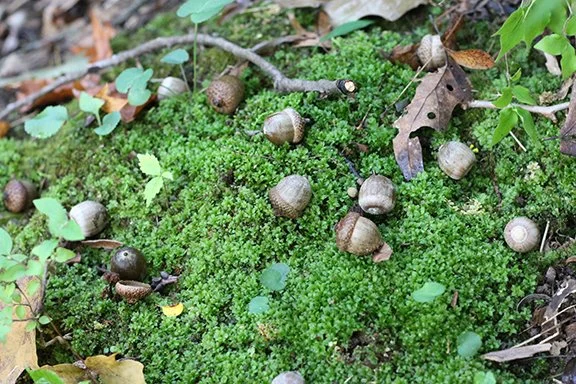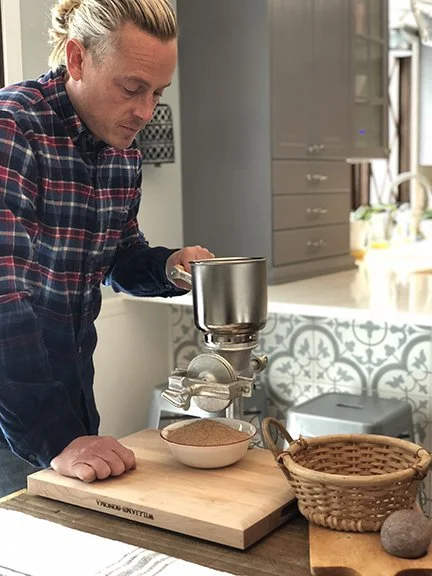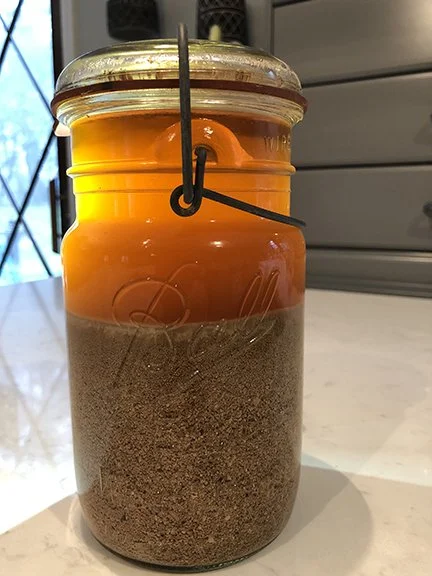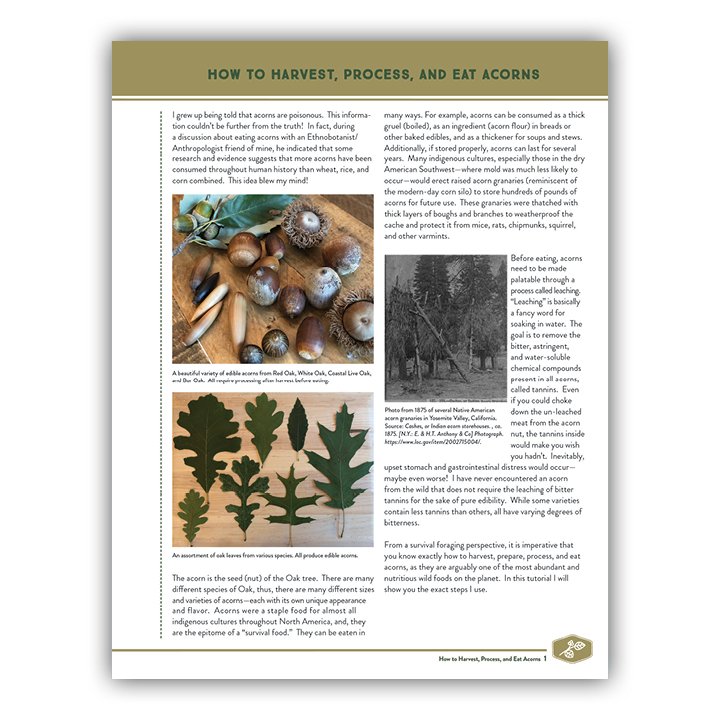How to Harvest, Process, and Preapred Acorns for Food
ACORNS: A Survival Superfood?
In the midst of autumn, as leaves cascade to the ground, acorns follow suit, carpeting the forest floor with potential sustenance that often goes unnoticed. A common I get is, "are acorns edible?" The answer is a resounding yes, and not only are they consumable, but they also harbor a rich history as a vital food source, potentially surpassing staples like wheat, rice, and corn in historical consumption. Let’s embark on a journey to explore how to eat acorns, transforming them from bitter seeds to a nutritious and delightful ingredient.
The Mighty Acorn and Its Varieties
Acorns, the seeds of the majestic oak tree, have been a staple in the diets of indigenous cultures across North America, providing not only sustenance but also versatility in culinary applications. From thick, hearty gruels to acorn flour utilized in bread and baked goods, acorns have proven to be a survival food that has sustained populations through times of scarcity. The various species of oak trees produce acorns of different sizes and flavors, each with its unique culinary profile, offering a spectrum of possibilities in the kitchen and in survival scenarios.
The Harvesting Process
Harvesting acorns is a practice that connects us to the cycles of nature and the practices of our ancestors. The “light drop” and “heavy drop” of acorns signify different phases in their ripening process. While the initial “light drop” acorns may be tempting, patience rewards the forager with the “heavy drop” acorns, which typically present superior quality and flavor. Healthy acorns should detach easily from their cups and exhibit a consistent, smooth color, free from blemishes and holes that indicate the presence of pests.
Shelling and Preparing Acorns
Once harvested, the acorns undergo a meticulous shelling process. Drying them for at least a week ensures that the nut meat separates easily from the shell, facilitating a smoother shelling experience. Each cracked acorn reveals a nut that should be inspected for quality, ensuring it is free from infestations and possesses a consistent, healthy color. This process, while labor-intensive, is crucial in ensuring the quality of the acorns that proceed to the next stage of preparation.
Grinding the Dried Acorns
Transforming acorns into a culinary ingredient involves grinding them into a meal or flour, which must then be leached. Whether employing modern kitchen appliances or adhering to traditional methods using a mortar and pestle, the acorns are ground into a fine meal.
Leaching and Making Acorn Edible
The question of "how to eat acorns" invariably leads us to the process of leaching, which transforms the bitter, astringent nut into a palatable ingredient. Tannins, the compounds responsible for acorns’ bitterness, are water-soluble and can be removed through a meticulous process of soaking or leaching. Cold-water leaching, a traditional and passive method, involves soaking ground acorn meal in water, allowing the tannins to leach out over several cycles, until the bitterness is eradicated, rendering the acorns not only edible but also enjoyable.
Culinary Adventures with Acorn
Acorn meal, rich in nutrients and history, can be incorporated into a myriad of dishes. From hearty acorn porridge, reminiscent of the gruels consumed by indigenous populations, to modern-day bread and cookies, acorn meal offers a gluten-free, nutritious alternative to conventional flours. Its unique flavor profile enhances recipes, providing not only sustenance but also a story of survival and adaptation.
Acorns in Survival Scenarios
In survival contexts, acorns stand out as a formidable ally, providing crucial calories and nutrients when other food sources may be scarce. The knowledge of how to identify, process, and prepare acorns is not only a nod to historical survival practices but also a valuable skill for modern-day survival enthusiasts and foragers alike.
If you want to download my 8-page FULL COLOR Guide to harvesting, processing, and eating acorns, you can do that here: https://www.creekstewart.com/survival-skill-training-sheet-sets/how-to-eat-acorns
I also have a fantastic VIDEO COURSE about how to harvest, process, and eat Acorns here: https://www.outdoorcore.com/courses/how-to-identify-harvest-process-and-eat-acorns
Conclusion
Acorns, once a vital food source that sustained civilizations, invite us to explore, learn, and connect with our ancestral roots and the natural world. Understanding how to transform these bitter seeds into nourishing meals answers the queries of "are acorns edible" and "how to eat acorns" with a culinary adventure that spans from tree to table. May your exploration of acorns provide not only nourishment but also a deeper appreciation for the bounties that nature, in its cyclical wisdom, bestows upon us.







